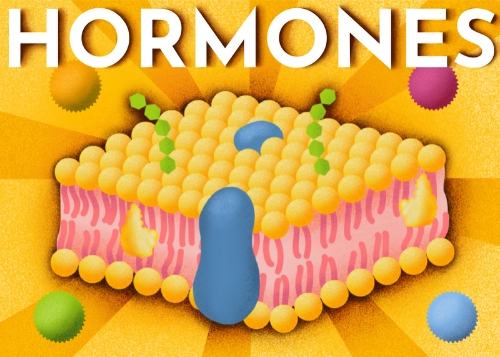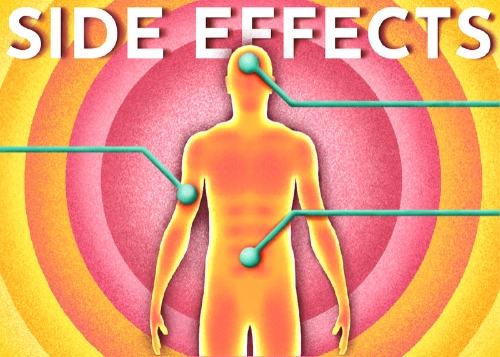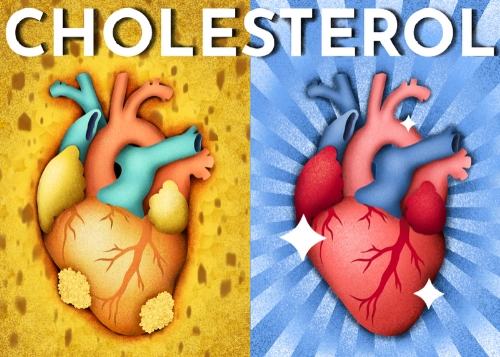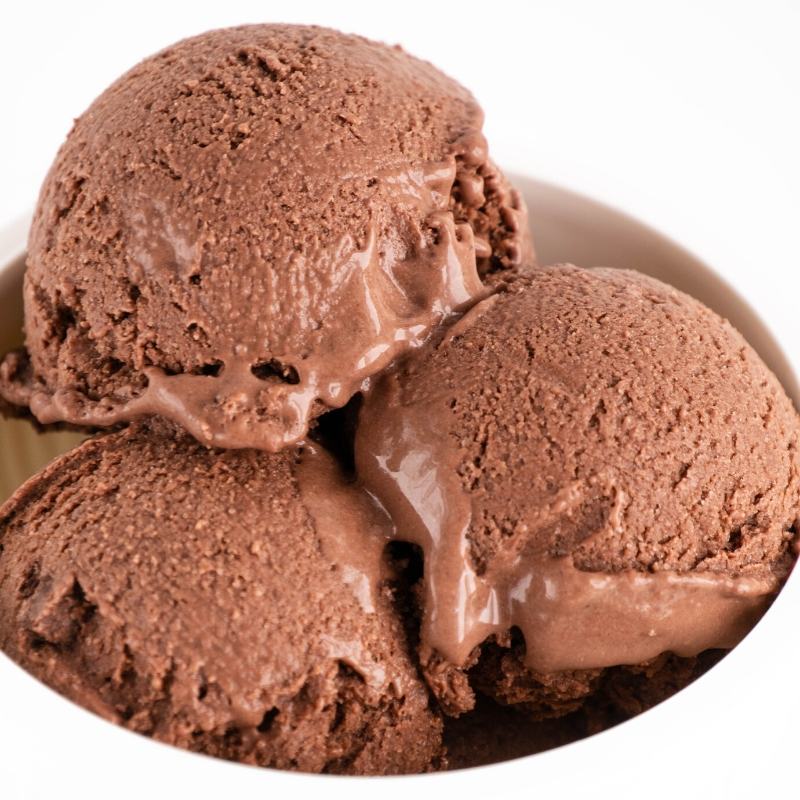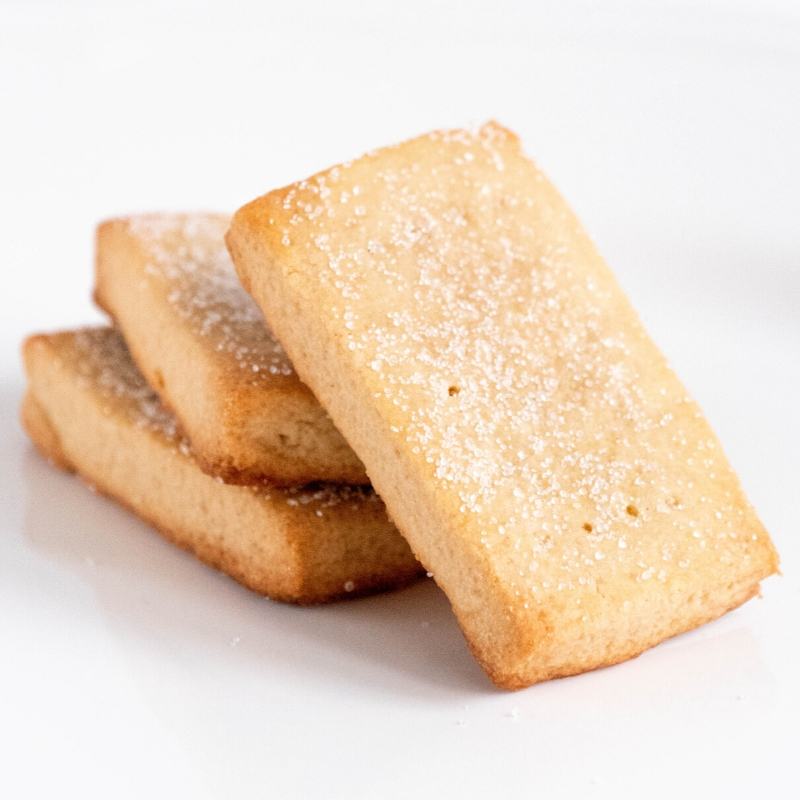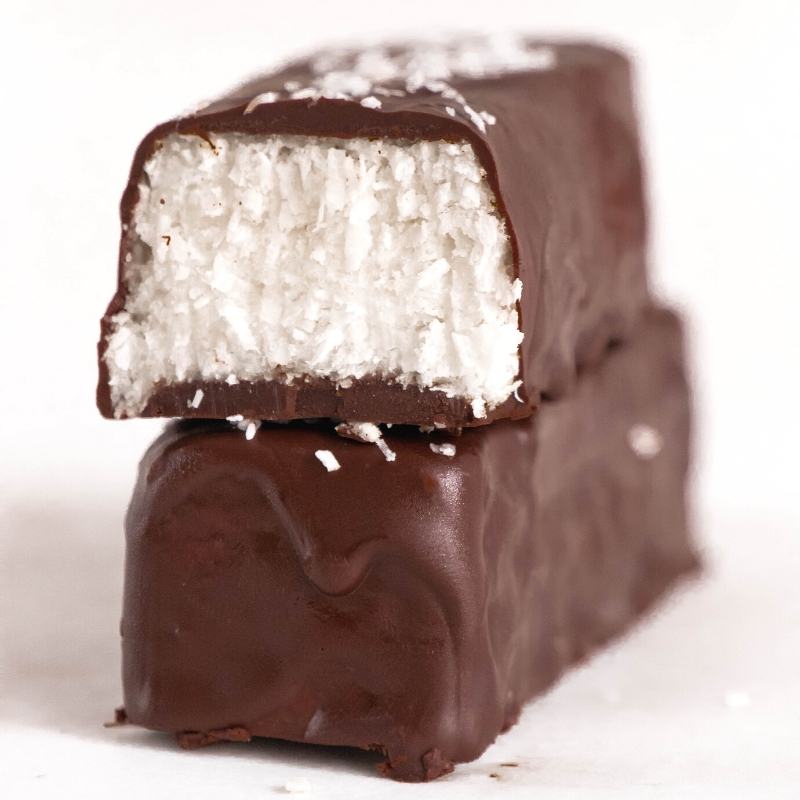Keto Diet 101: The Ultimate Guide for Beginners
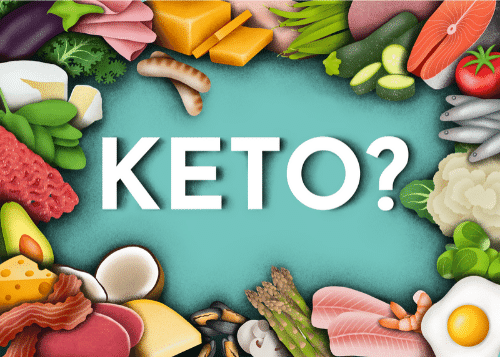
- The ketogenic diet reduces the intake of carbohydrates to a minimum (20g-30g per day) and replaces them with healthy fats and proteins.
- The ketogenic diet is a healthy and effective way to burn body fat and dozens of studies show that it is more effective than a low fat diet.
- It can also have a positive effect on a large number of chronic illnesses and improve mental performance.
The ketogenic diet goes against almost everything that nutrition authorities have been preaching since the 1970s.
Fat no longer makes you fat and sick, but energetic and slim.
Carbohydrates, which usually account for at least 50% of daily calories, are reduced to just 5%.
The ketogenic diet basically flips the well-known food pyramid upside down.
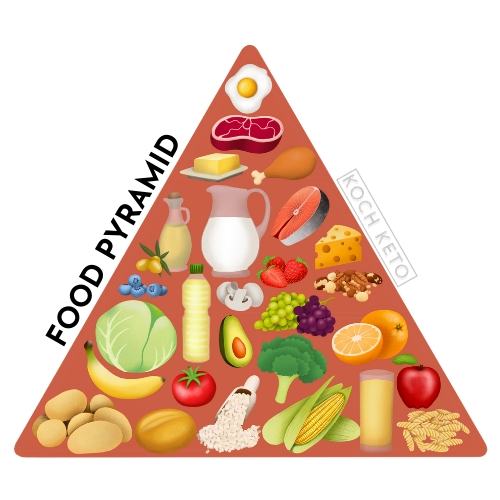
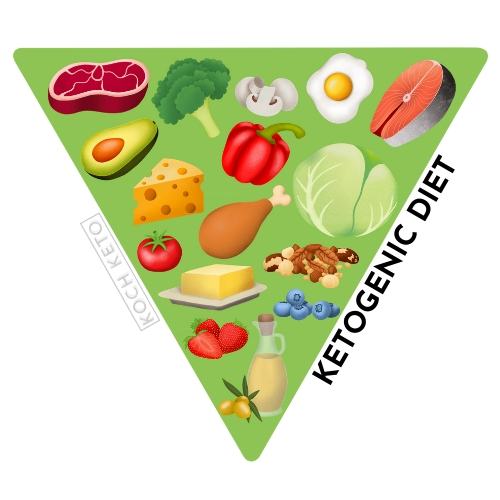
Your body will be too.
Even the most stubborn pounds start melting from your stomach and blood sugar crashes are a thing of the past.
You no longer have to endure painful hunger that appears every two hours and is impossible to ignore.
Instead, you will find yourself with a quiet growl now and then that makes it easy to become independent of the constant food intake you’re used to.
Chronic diseases such as diabetes or migraines are starting to become less and less frightening.
All of this and even more will no longer be a distant dream but a reality.
We use scientific evidence to show you why and how the ketogenic diet works, how to get the most benefits, and what obstacles you might encounter.
You’ll also find a practical guide on what to eat and drink on a ketogenic diet and what foods you should avoid.
The content provided in this post is for informational purposes only and does not constitute medical advice. It is not intended to replace professional medical advice, diagnosis, or treatment. See further information.
1. What is the ketogenic diet and how does it work?
The ultimate goal of the ketogenic diet is to change your metabolic state from a sugar burner to a fat burner.
If you drastically reduce the amount of carbohydrates you eat, your body is forced to use an alternative fuel source as it can’t rely on burning sugar anymore.
This alternative fuel source will primarily be dietary fat and protein as well as your stored body fat.
It takes a few days until your body has made the switch into the fat-burning mode.
Once you’re past the first few days, your body will enter the so-called state of “ketosis” and is now perfectly suitable to burn fat instead of sugar.
How ketosis works
This process helped us to survive periods of food scarcity in the past as it could simply feed on its’ own energy stores that were build in times of food abundance.
The ketogenic diet uses this exact process to its’ advantage and will make you switch into the “fasting state” without the need to actually fast.
Both food restriction and carbohydrate restriction will lead to the fat-burning state called “ketosis”.
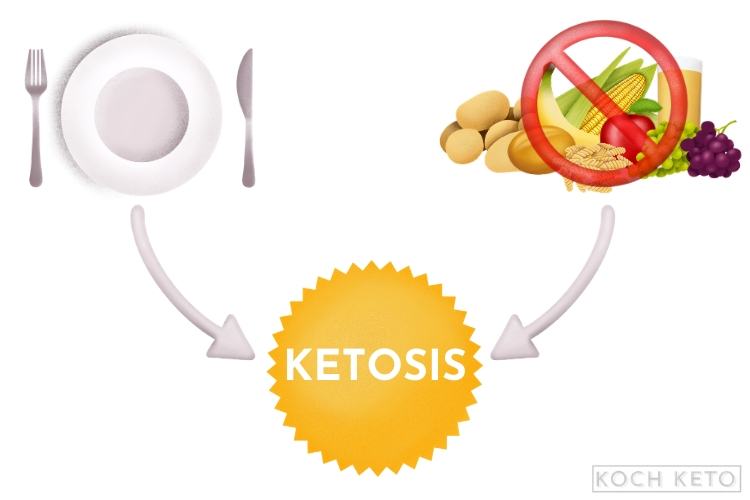
From sugar burner to fat burner
Your body can’t burn sugar and fat at the same time.
If you ingest carbohydrates, your body will automatically block the mechanism for fat burning.
So if your goal is to lose weight and you’re eating a lot of carbohydrates, you’re fighting against adverse circumstances.
Your body can only access its’ own fat stores once the ingested carbohydrates are used up.
This is either the case if you have not eaten anything for a long time (for example, when you sleep) or if you have eaten very little, for example on a highly calorie-restricted diet.
Although it is possible to lose weight with carbohydrates in your diet, you’re making it harder for yourself.
Small windows of fat burning and a whole lot of hunger will surely deplete your willpower and motivation quite quickly.
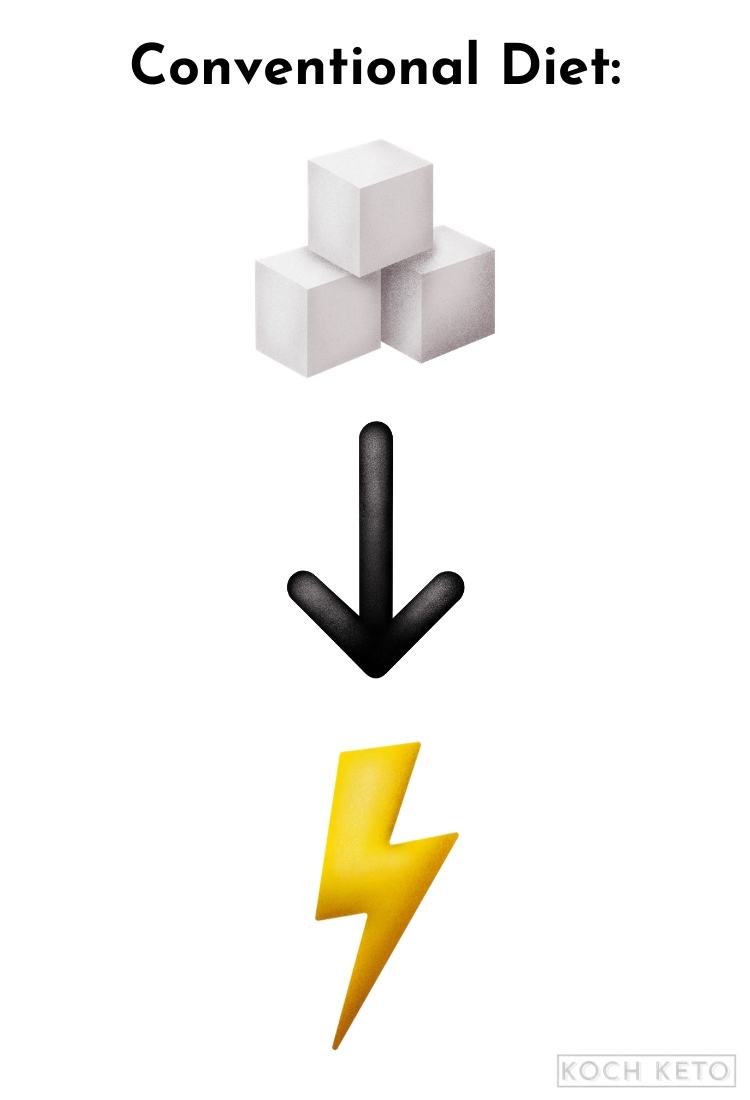
Losing fat and – more importantly – keeping it off doesn’t seem unattainable anymore and if you’re in ketosis you also don’t have to battle the constant hunger that conventional diets usually cause.
Thanks to the ample fat reserves your body can now easily access, you’re basically always carrying around your lunch.
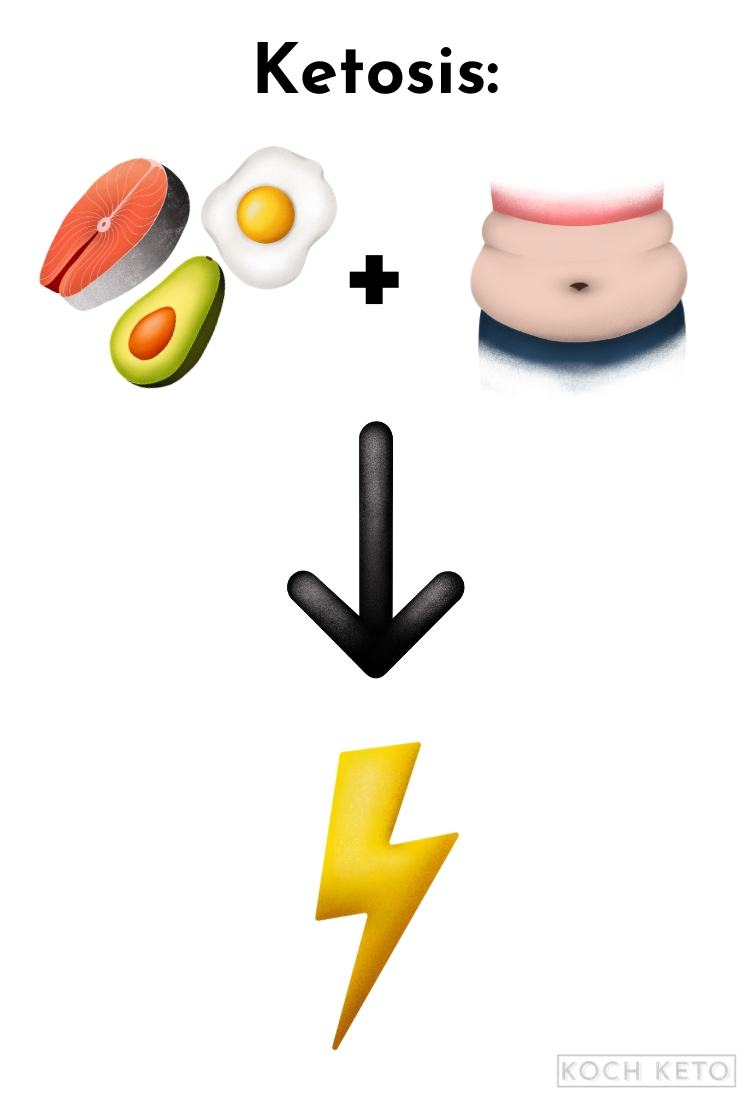
The ketogenic diet makes you switch into ketosis
This means that only about 5% of your daily calories should come from carbohydrates.
For most people, 5% of daily calories will be about 20-30g of carbohydrates.
Protein should make up about 15-20% of your daily calories and the remaining 70-80% of calories should come from dietary fat.
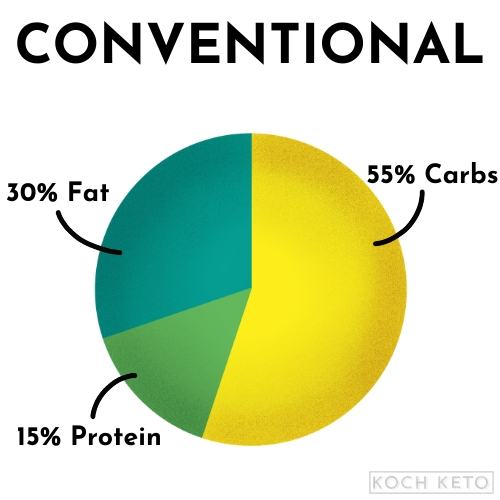

Carbohydrates are not essential
Some proteins and fats cannot be produced by your body and you have to ingest them through the food you’re eating.
These specific proteins and fats are thus essential for your body and you cannot live without eating them.
That’s why you can’t remove either protein or fat from your diet without facing serious health consequences.
Carbohydrates on the other hand are not essential.
While it is true that your body needs carbohydrates to survive, they do not have to come from food.
Your body can easily convert fats and proteins into the required carbohydrates.
Those self-made carbohydrates can now supply the parts of your body with energy that can’t function without them, for example, certain parts of the brain or certain kidney cells.
All other cells of your body can easily function without any carbohydrates as an energy source.
Those cells will use an alternative fuel source that your body builds from fat and protein, so-called ketone bodies.
Ketone bodies supply your body with energy in ketosis
This has positive effects on your ability to concentrate, but also on neurological diseases such as epilepsy or migraines.
But this is only one of the dozens of scientifically proven benefits of a ketogenic diet.
Summary:
- The ketogenic diet reduces the intake of carbohydrates from your diet to a bare minimum.
This causes your body to switch into the fat-burning state called ketosis. - In ketosis, your body produces so-called ketone bodies from fats and proteins, which provide most of your energy supply.
- There are no essential carbohydrates, meaning they don’t have to be ingested.
Your body can easily build its’ own carbohydrates from fat and protein.
2. Benefits of a ketogenic diet
To cut out all carbohydrates from your diet may seem like a pretty big hit for most people.
Find out why you should do it anyway and what benefits the ketogenic lifestyle has.
Weight loss
The bad news is that – even in ketosis – you’ll have to pay attention to what and how much you’re eating.
The good news is that there are still tons of benefits to eating ketogenic if you want to lose weight.
The hormones in your body that are responsible for weight gain (insulin), hunger (ghrelin), and satiety (e.g. PYY) are positively influenced by a carbohydrate-reduced diet.
And over 20 controlled studies show that a low carb diet is more effective for losing weight than a low fat diet.
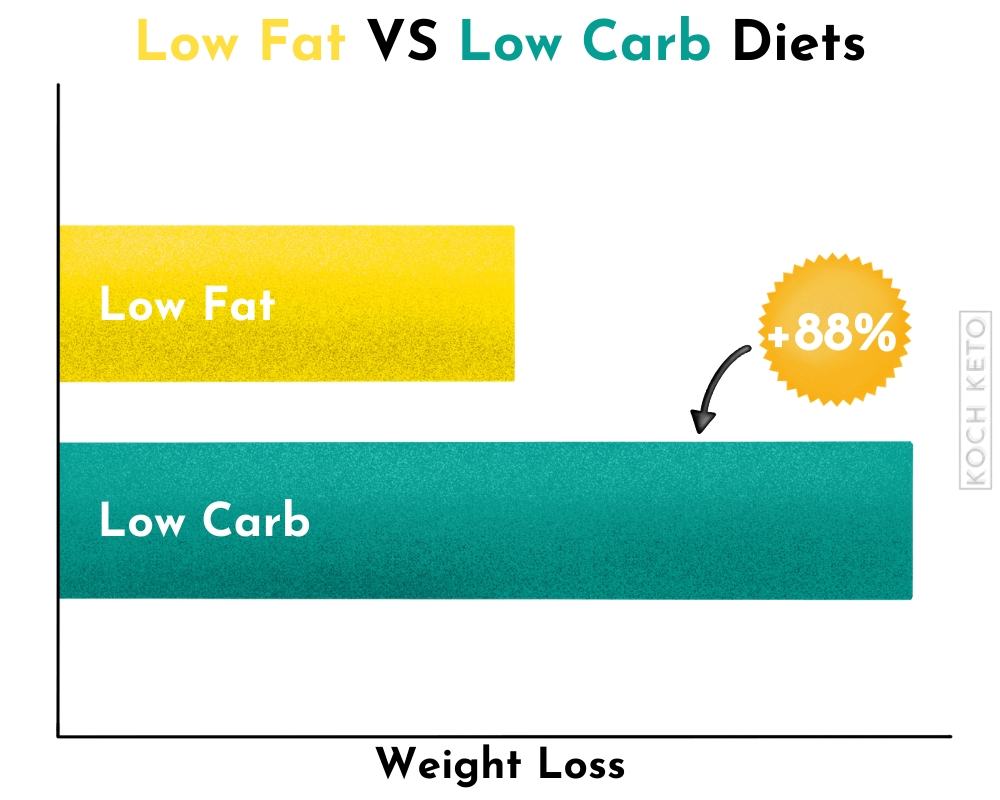
A low carb diet automatically reduces the amount of insulin released, because carbohydrates have by far the greatest effect on our insulin levels.
An increased insulin level makes weight loss harder because insulin blocks the fat burning mechanism in our body.
Fats and proteins have a much smaller effect on our insulin level and thus ensure that nothing interferes with the fat-burning process.
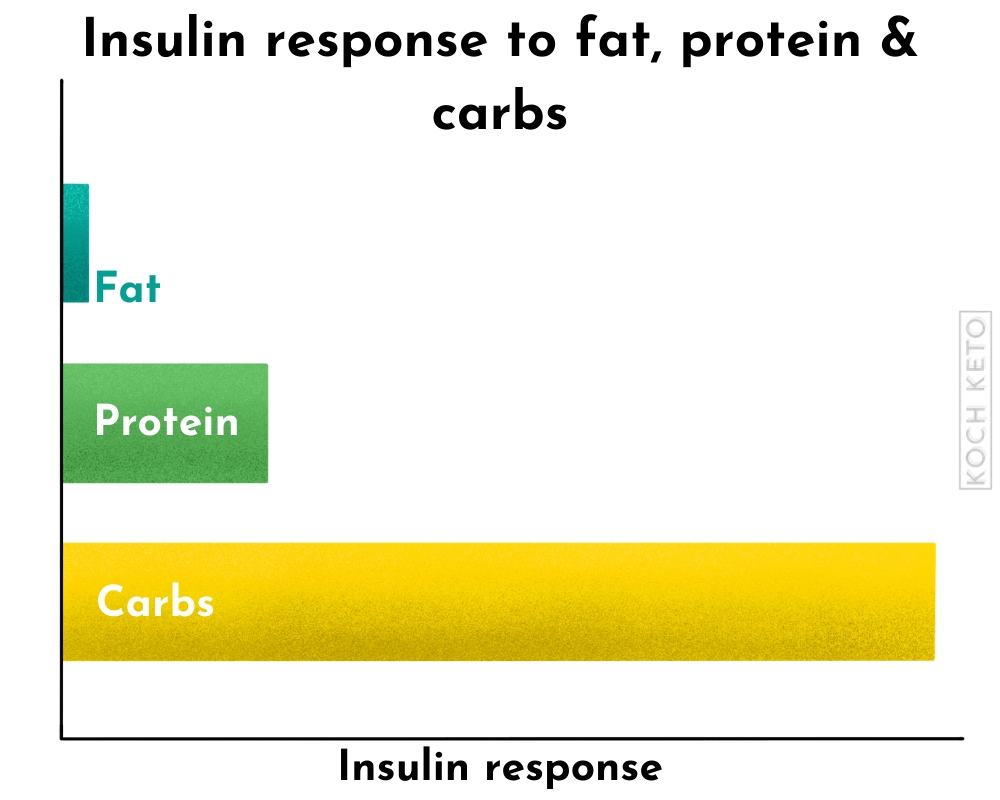
Especially the highly processed carbohydrates that can be found in pastries, sweets or soft drinks seem to not send any satiety signals to the brain, even though they contain a lot of calories.
On the other hand, fats and especially proteins release large amounts of satiety hormones.
Our hunger hormone ghrelin is also negatively influenced by carbohydrates and leads to hunger rebounds and food cravings shortly after a carbohydrate-rich meal.
This is largely due to the strong impact of carbohydrates on our blood sugar levels.
If you’re in ketosis, you’re releasing significantly less of the hunger hormone ghrelin in general.
Type 2 Diabetes
More than 10% of the US population has type 2 diabetes.
Almost 35% are in the stage of “pre-diabetes” – they have elevated blood sugar levels and will most likely also develop type 2 diabetes in the next few years.
Over 80% of lower limb amputations are due to type 2 diabetes.
It is also by far the most common cause of blindness and kidney failure.
Patients with type 2 diabetes are twice as likely to die from a heart attack or stroke.
They also have a higher chance of developing certain types of cancer.
In other words, diabetes is a very serious disease you don’t want to have.
Thankfully, there is a very effective treatment that isn’t utilized as much as it should be.
Carbohydrate-reduced diets, such as the ketogenic diet, can help keep blood sugar and insulin levels in check.
In many cases, even a remission is possible thanks to a low carb diet.
Dozens of studies prove the effectiveness of a low carb diet for the treatment of type 2 diabetes.
Improved risk factors for heart disease
Neurological disorders
The ketogenic diet has been used for over 100 years as a successful treatment for epilepsy.
But newer studies show that other neurological diseases such as multiple sclerosis , Parkinson’s and migraines could also benefit from a ketogenic diet.
In addition, the ketogenic diet seems to have an anti-inflammatory effect , which could benefit many other inflammatory neurological diseases.
PCOS
Polycystic ovary syndrome (PCOS) causes irregular periods, infertility, hair loss, acne and an overall diminished quality of life.
It is estimated that about 10% of women of child-bearing age are affected and most of them seem to be overweight and/or insulin resistant.
A small pilot study on women with PCOS found significant positive effects after they followed a ketogenic diet.
Alzheimer’s
Alzheimer’s disease is now often referred to as diabetes type 3.
More and more experts seem to agree that the disease may be caused by insulin resistance of the brain.
This assumption is also supported by the fact that the majority of all Alzheimer patients are insulin resistant or diabetic.
The brain cells can’t be properly supplied with energy due to the insulin resistance and they begin to “starve” which eventually leads to the different symptoms of Alzheimer’s.
Ketone bodies don’t need insulin to enter the brain cells and can thus be used as an alternative fuel source in the affected brain.
A few pilot studies show very promising cognitive improvements in Alzheimer’s patients that have been treated with exogenous ketone bodies.
Cancer
Being overweight is the biggest risk factor for some common cancers such as kidney or colon cancer – even bigger than smoking.
High blood sugar and insulin levels that are common in overweight people probably play a major role in the development of these cancers.
The ketogenic diet could be used as an adjunct in the conventional treatment of certain cancers and some promising studies are showing positive effects.
Especially in the treatment of some very aggressive brain cancers, the ketogenic diet seemed to have a significant beneficial effect.
More benefits
Even completely healthy people can benefit from a ketogenic diet.
Dozens of studies and thousands of testimonials describe an increased ability to concentrate and improved brain function, improved mood, higher energy levels, reduced levels of inflammation in the body and the relief of inflammation-induced pain.
So it may be worth it for you to try the ketogenic diet, even if you don’t want to lose weight.
Summary:
- In contrast to conventional diets, the ketogenic diet has a positive effect on your hormones and can make losing weight much easier.
- A ketogenic diet can be beneficial for many chronic diseases, including type 2 diabetes, Alzheimer’s disease, and some neurological diseases.
- Many people experience increased energy levels, improved mood, and better mental performance during ketosis.
3. What foods can I eat on a ketogenic diet?
Switching to a ketogenic diet can be a little overwhelming at first, especially if you ate a lot of carbohydrates before.
This list is supposed to give you an overview of the best ketogenic foods and beverages.
You’ll also find a list of what you should avoid on a ketogenic diet.
Keto foods
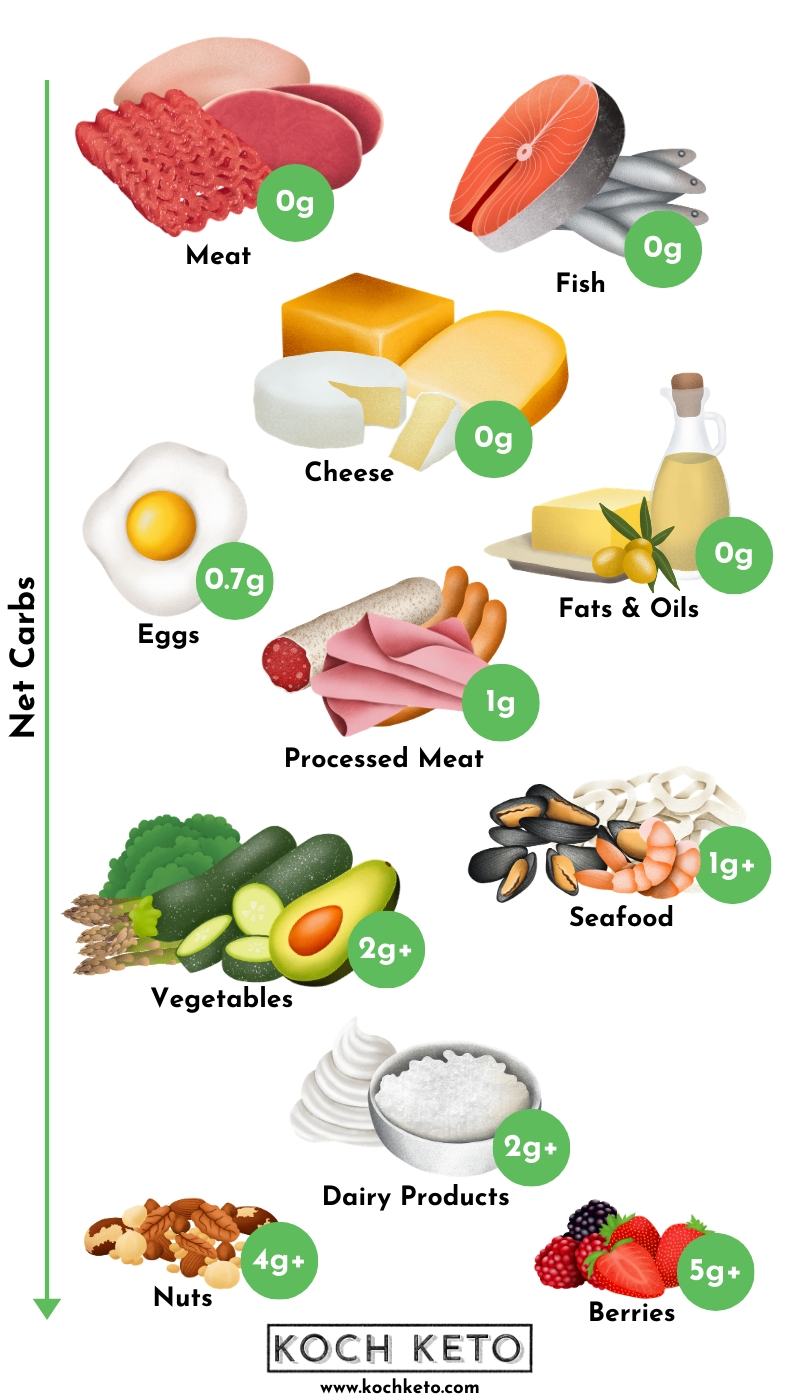
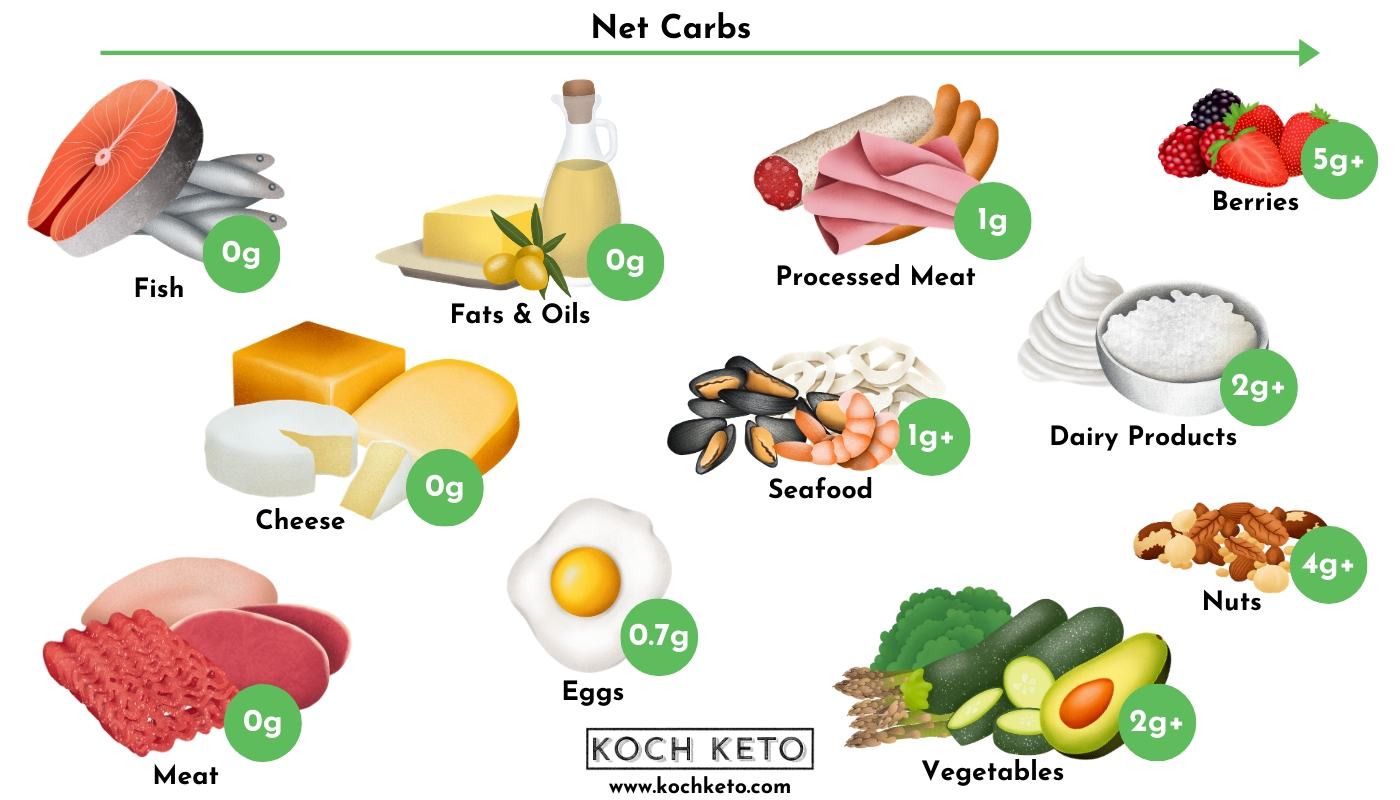
Low sugar fruit like berries can also be part of a healthy keto diet.
Even though the ketogenic diet excludes some supposedly nutritious foods, you do not need to worry about nutrient deficiencies if you follow a healthy ketogenic diet.
The nutrients lost by not eating bananas and wholegrain bread can be easily replaced by eating low carb vegetables and animal products.
Keto drinks
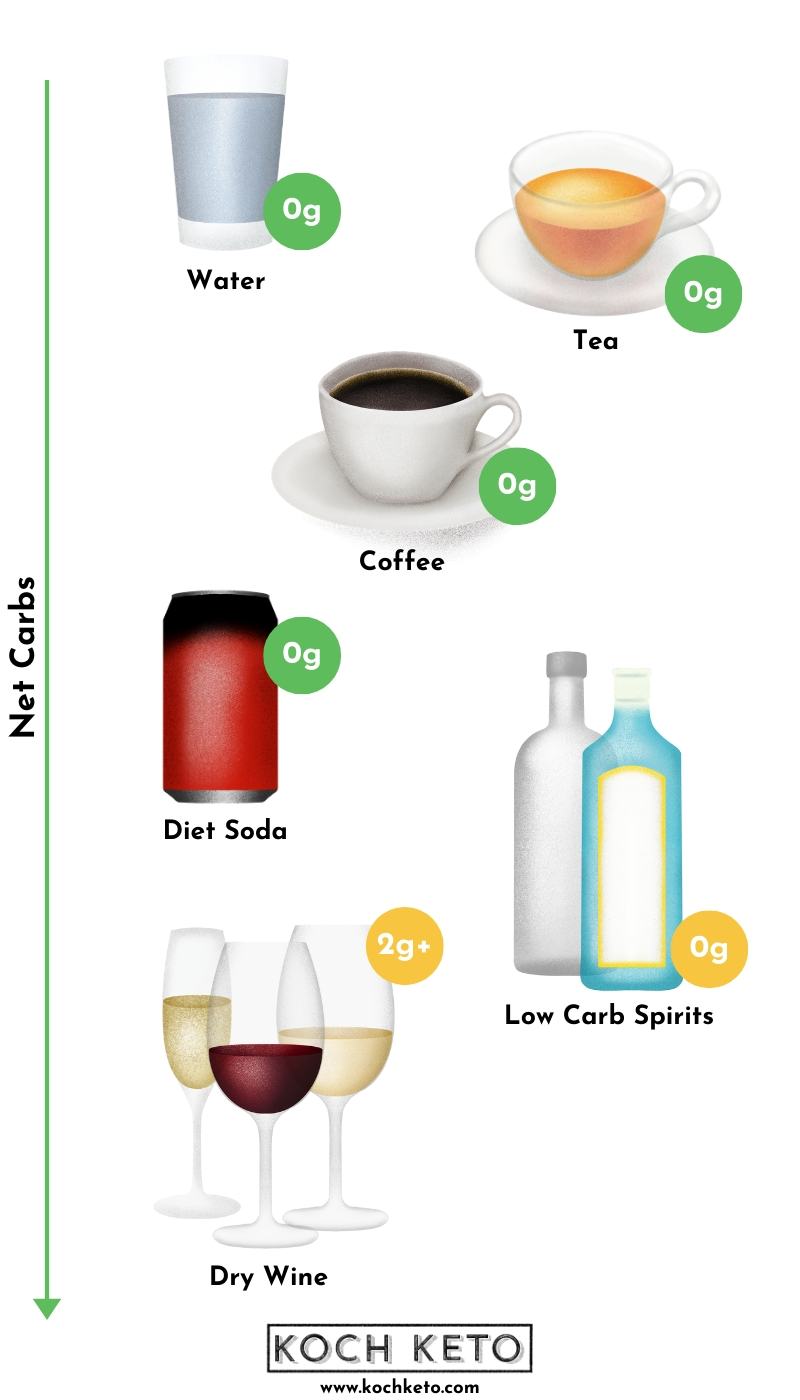
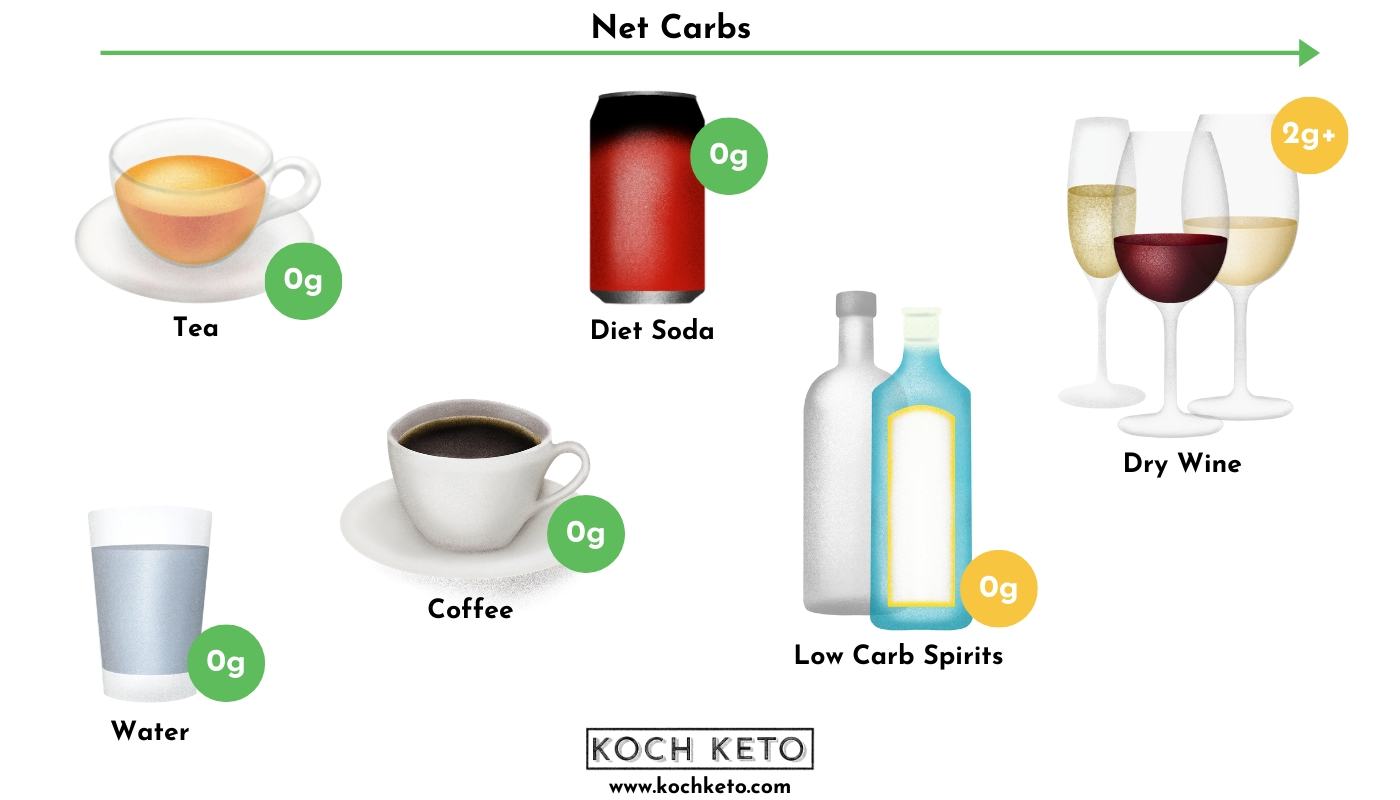
Although diet sodas are controversial for several reasons, they are generally suitable for a ketogenic diet.
Even alcohol is fine if consumed in moderation.
The best choices for a keto diet are dry wine and sparkling wine as well as some spirits like gin or vodka.
Foods to avoid
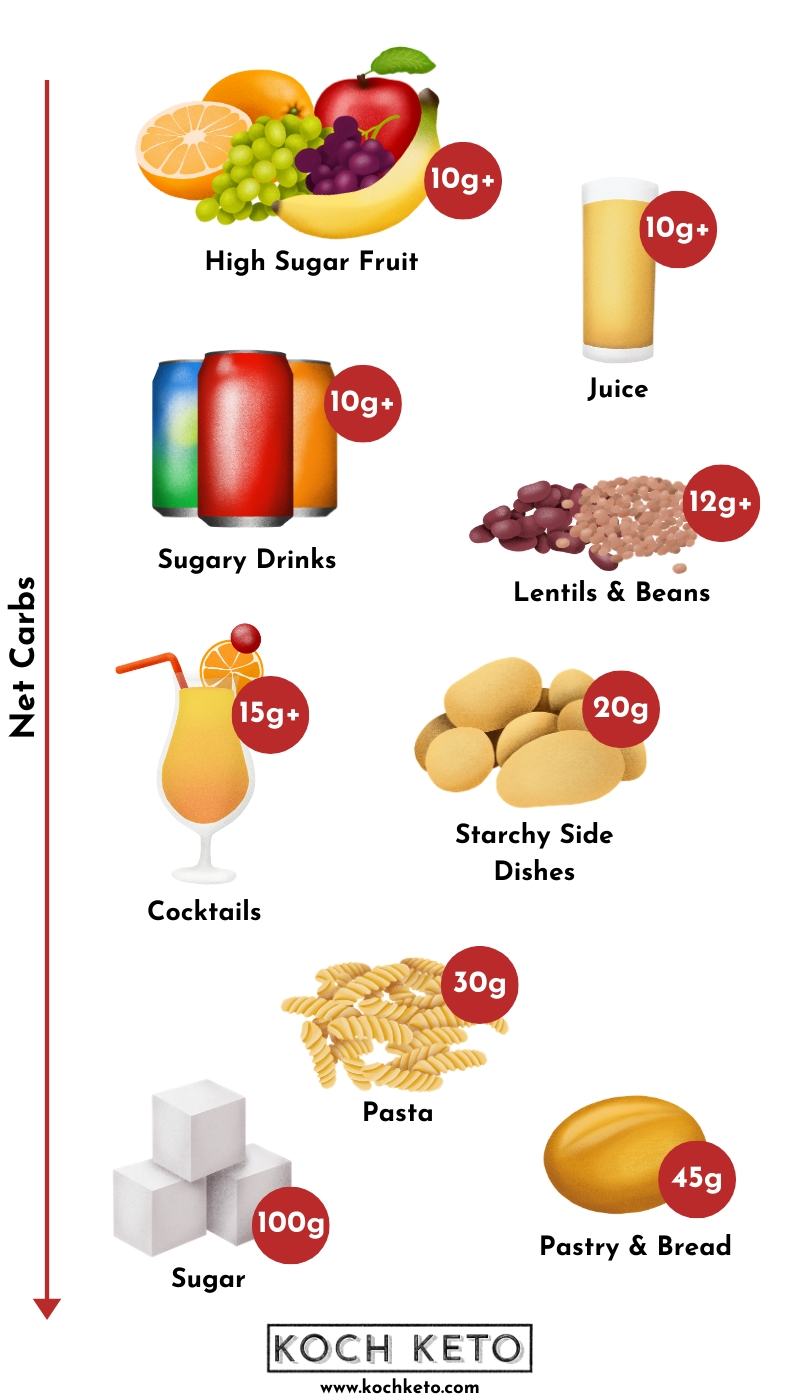
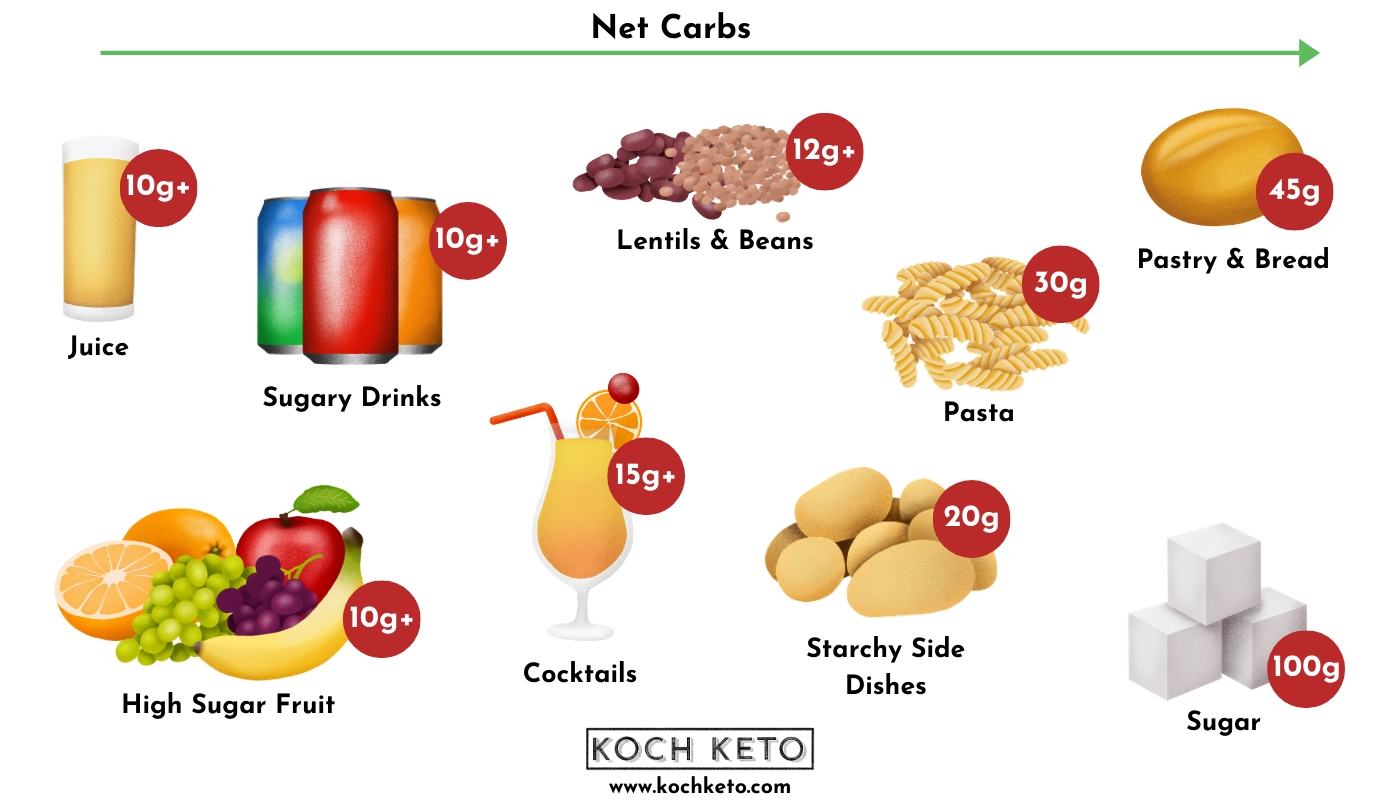
Fruit that is high in sugar like bananas or grapes is also not a wise choice on a keto diet.
Fruit juices of all kinds should also be avoided on a low carb diet – although they have a healthy image, their sugar content resembles that of a soft drink.
- A well formulated ketogenic diet should mainly consist of low carb vegetables, animal products, nuts, healthy fats and low sugar fruit in moderation.
- Water, tea and coffee can be enjoyed without restrictions on the ketogenic diet.
Diet sodas are controversial but can be part of a keto diet.
Dry wine and sparkling wine, as well as low carb spirits, can also be enjoyed in moderation. - Foods that are high in carbohydrates, such as juices, potatoes, rice, cereal products, beans, and lentils, as well as sugar-rich fruit, should be avoided on a ketogenic diet.
4. Possible side effects of a ketogenic diet
For most of us, ketosis is an unfamiliar state and our body has to go through some major changes before we become a fat-burning machine.
Your body needs a few days to complete all the steps to be able to function properly without any carbohydrates.
Especially in the first 3-4 days, you may experience some unexpected symptoms, which you should be aware of.
Fortunately, most side effects are limited to these first few days and should disappear completely after a week at the latest.
There are also a few tips and tricks that can make the transition easier for you.
Possible side effects
- Keto “flu”
This is not a real flu, but similar symptoms such as headaches and fatigue can occur in the first 3-7 days.
In most cases, additional salt and water will help alleviate the symptoms and sometimes even prevent them completely. - Digestive problems
At the beginning of the transition, digestive problems such as constipation or diarrhea can appear. Taking psyllium husks and eating more fibre can be a solution to this problem.
- Muscle cramps
Can occur if the salt, magnesium or potassium intake is too low. - Fatigue
- Although the ketogenic diet has many benefits, it is possible to develop some side effects.
- Usually, these side effects are temporary and easy to avoid.
Frequently asked questions
How does the ketogenic diet work?
This causes your body to change to a different metabolic state called ketosis.
In ketosis, your body uses primarily fat as an energy source which makes burning body fat easier.
How fast can I lose weight with the keto diet?
A large part of this initial weight loss is water that was previously bound in the carbohydrate (glycogen) stores of your body.
After the first two weeks, the average weight loss is about 1-2 lbs or 0.5-1kg per week.
How fast you burn fat on keto also depends on other factors, such as whether you practice intermittent fasting or exercise.
How do I know if I'm in ketosis?
The most accurate way to test your ketone bodies is a blood test, which can give you a pretty accurate reading of the amount of ketone bodies in your blood.
An alternative method of measuring ketones is to use specific urine strips (Ketostix), which aren’t as reliable but still a helpful tool.
How many carbs can I eat on the ketogenic diet?
Which foods are ketogenic?
Examples for ketogenic foods are low carb vegetables, animal products such as meat, cheese and eggs, nuts and seeds and healthy fats.
How long should I follow the ketogenic diet?
If you have reached your ideal weight with the ketogenic diet and are looking for more flexibility in your diet, a change to a more relaxed low carb diet may be right for you.
Returning to a high carb diet is not advisable, as it will most likely be accompanied by weight regain and a comeback of resolved health issues.
Is the ketogenic diet dangerous?
However, any major change in your diet should always be discussed with your doctor.
What foods should I avoid on the keto diet?
These include potatoes, pasta, rice, bread, fruit juices, soft drinks, and sugar-rich fruit.

